1. Ruscher SM, Wit R, Mazmanian D. Psychiatric patients' attitudes about medication and factors affecting noncompliance. Psychiatr Serv. 1997; 48:82–85. PMID:
9117506.
2. Kissling W. Ideal and reality of neuroleptic relapse prevention. Br J Psychiatry Suppl. 1992; 161:133–139. PMID:
1356363.

3. Bond WS, Hussar DA. Detection methods and strategies for improving medication compliance. Am J Hosp Pharm. 1991; 48:1978–1988. PMID:
1928147.

4. Oh HJ. The burden and professional help for the family of the mental illness. J Korean Acad Nurs. 2000; 30:202–212.
5. Harvey NS, Peet M. Lithium maintenance: Effects of personality and attitude on health information acquisition and compliance. Br J Psychiatry. 1991; 158:200–204. PMID:
2012911.
6. Drain J, Solomon P. Explaining attitudes toward medication compliance among a seriously mentally ill population. J Nerv Ment Dis. 1994; 182:50–54. PMID:
8277302.
7. Schwartz RC, Skaggs JL, Peterson S. Critique of recent empirical research on insight and symptomology in schizophrenia. Psychol Rep. 2000; 86:471–474. PMID:
10840897.
8. Gao X, Nau DP, Rosenbluth VS, Woodward C. The relationship of disease severity, health beliefs and medication adherence among HIV patients. AIDS Care. 2000; 12:387–398. PMID:
11091771.

9. Scott CS, Lore C, Owen RG. Increasing medication compliance and peer support among psychiatrically diagnosed students. J Sch Health. 1992; 62:478–480. PMID:
1289660.

10. Buchanan A. A two-year prospective study of treatment compliance in patients with schizophrenia. Psychol Med. 1992; 22:787–797. PMID:
1357703.

11. Razali MS, Yahya H. Compliance with treatment in schizophrenia: A drug intervention program in a developing program. Acta Psychiatr Scand. 1995; 91:331–335. PMID:
7639089.
12. Shon KH. A comparative study on relationship of social support, life events, and depression between psychiatric patients and normal subjects. Nurs Science. 1997; 9:59–86.
13. Adams J, Scott J. Predicting medication adherence in severe mental disorders. Acta Psychiatr Scand. 2000; 101:119–124. PMID:
10706011.

14. Budd RJ, Hughes I, Smith JA. Health beliefs and compliance with antipsychotic medication. Br J Clin Psychol. 1996; 35:393–397. PMID:
8889080.

15. Janz NK, Becker MH. The Health belief model: A decade later. Health Educ Q. 1984; 11:1–47. PMID:
6392204.

16. Fenton WS, Blyler CR, Heinssen RK. Determinants of medication compliance in schizophrenia: Empirical and clinical findings. Schizophr Bull. 1997; 23:637–651. PMID:
9366000.

17. Richardson MA, Simons-Morton B, Annegers JF. Effect of perceived barriers on compliance with antihypertensive medication. Health Educ Q. 1993; 20:489–503. PMID:
8307768.

18. Reiger DA, Farmer ME, Rae DS. Comorbidity of mental disorders with alcohol and other drug abuse. JAMA. 1990; 264:2511–2518. PMID:
2232018.

19. Lee CS, Han ES, Hwang TY. Public mental health and community: psychosocial rehabilitation program for mentally ill. 1996. Kyoungido: Yongin psychiatric hospital.
20. Becker MH. The health belief model and personal health behavior. Health Educ Mono. 1974; 2:324–473.
21. Harber J, Krainovich-Miller B, McMahon LA, Price-Hoskins P. Comprehensive Psychiatric Nursing. 1996. 5th ed. St. Louis: Mosby.
22. Overall JE, Gorham DR. The brief psychiatric rating scale. Psychol Rep. 1962; 10:799–812.

23. Sarason IG. The social support questionnaire. Measuring health: A guide to rating scales and questionnaires. 1983. New York: Oxford Univ. Press;p. 867–869.
24. Moon JS. A study of instrument development for health belief of Korean adults[dissertation]. 1990. Seoul: Yonsei Univ..
25. Korean Ministry of Culture and Athlete. Current status of adolescent drug misuse and prevention strategies. 1996. Ministry of culture and athlete press.
26. Cho SB. LISREL structural equation model. 1996. Seoul: Young-Ji Press.
27. Hwang MS. The effects of medication education to schizophrenia patients medication knowledge and medication compliance[dissertation]. 1998. Seoul: Yonsei Univ..
28. Collins-Colon T. Do it yourself: Medication management for community based clients. J Psychosoc Nurs Ment Health Serv. 1990; 28:25–29. PMID:
2366218.
29. Ku MO, Lee EO. Health belief model and Korean chronic patients' sick role. J Korean Academy. 1990; 29:49–63.
30. Shon KH, Park SS. Medication and symptom management education program for the rehabilitation of psychiatric patients in Korea: the effects of promoting schedule on self-efficacy theory. Yonsei Med J. 2002; 43:579–589. PMID:
12402370.

31. Kim BY, Lee CW, Park CW. The relationship among insight, psychopathology and drug compliance in the schizophrenic patient. J Korean Neuropsychiatric Association. 1993; 32:373–380.
32. Perkins DO. Adherence to antipsychotic medications. J Clin Psychiatry. 1999; 60:25–30. PMID:
10548139.
33. Owen RR, Fischer EP, Booth BM, Cuffel BJ. Medication noncompliance and substance abuse among patients with schizophrenia. Psychiatr Serv. 1996; 47:853–858. PMID:
8837158.
34. Olfson M, Mechanic D, Hansell S, Boyer AC, Walkup J, Weiden PJ. Predicting medication noncompliance after hospital discharge among patients with schizophrenia. Psychiatr Serv. 2000; 51:216–222. PMID:
10655006.

35. Pristach CA, Smith CM. Medication compliance and substance abuse among schizophrenia patients. Hosp Community Psychiatry. 1990; 41:1345–1348. PMID:
1980483.
36. Rosenstock IM, Strecher VJ, Becker MH. Social learning theory and the health belief model. Health Educ Q. 1988; 15:175–183. PMID:
3378902.

37. Colom F, Vieta E, Martinez-Aran A, Reinares M, Benabarre A, Gasto C. Clinical factors associated with treatment noncompliance in euthymic bipolar patients. J Clin Psychiatry. 2000; 61:549–555. PMID:
10982196.





 PDF
PDF ePub
ePub Citation
Citation Print
Print


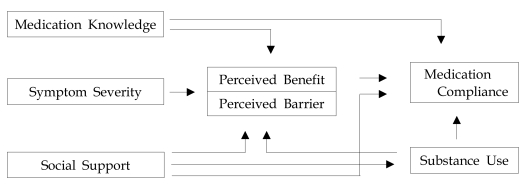
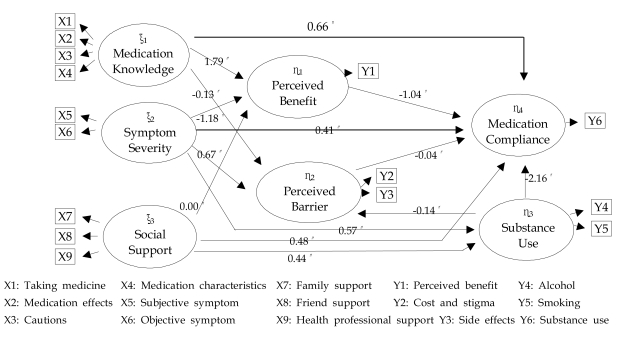
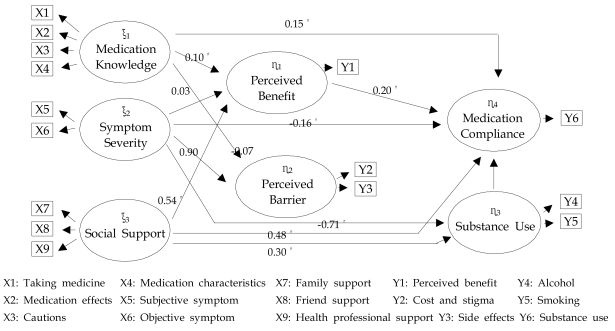
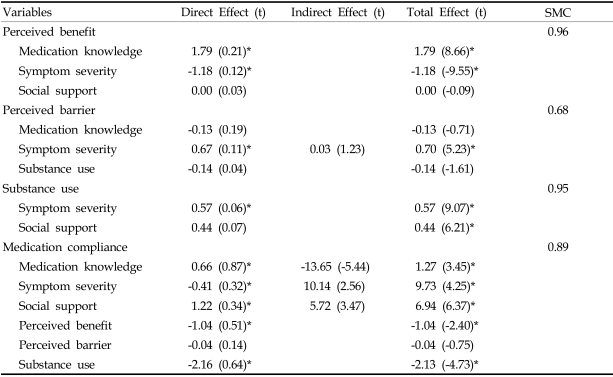

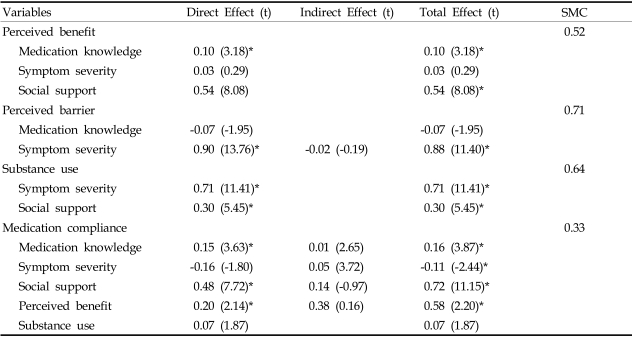
 XML Download
XML Download